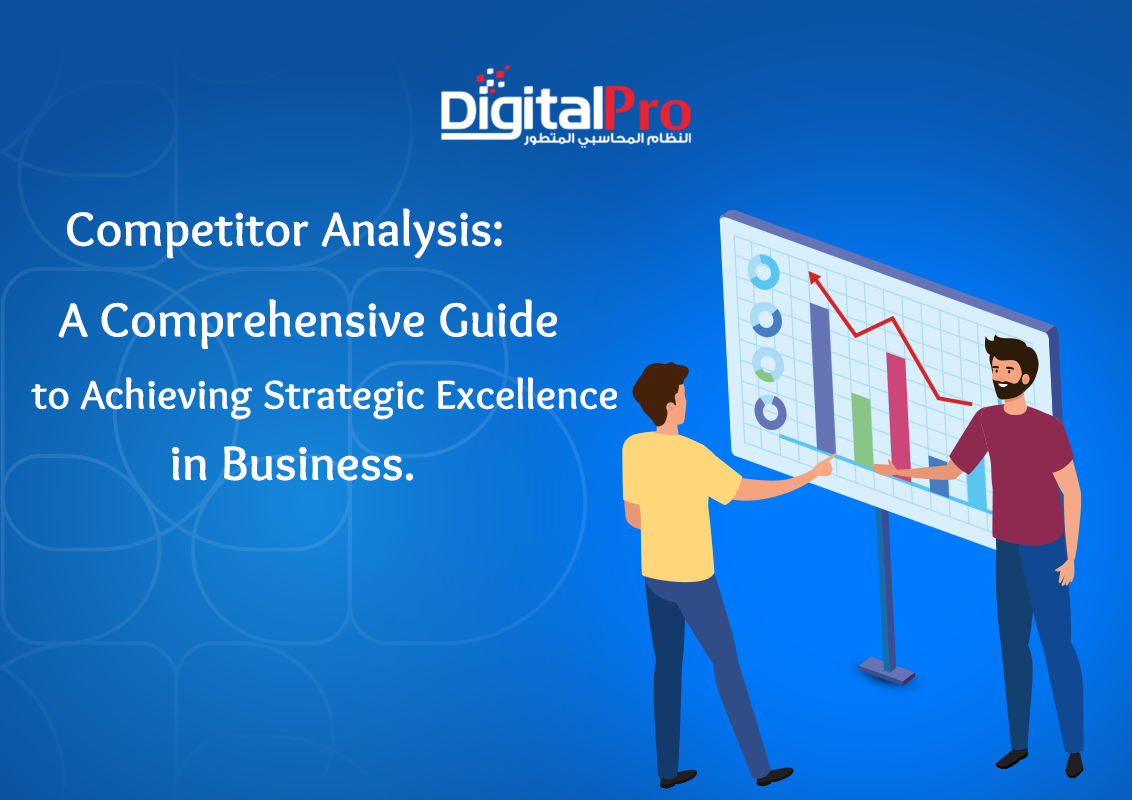Competitor Analysis: A Comprehensive Guide to Achieving Strategic Excellence in the Business World
Competitor analysis is not just a step in building business strategies; it is a fundamental art that enhances companies' ability to excel and grow in a constantly changing and challenging environment. This analysis forms the basis for an accurate understanding of the market reality and its potential opportunities, and is one of the most important tools that enable companies to make smart, forward-looking decisions.
The Concept of Competitor Analysis
Competitor analysis is a systematic process of investigating and reviewing vital information about companies that share the market, with the aim of assessing their strengths, weaknesses, and strategies. This contributes to enabling the company to adapt to rapid changes and develop strategies that enhance its competitive position.
The Importance of Competitor Analysis
The importance of competitor analysis stems from its ability to transform knowledge into a competitive advantage, which enhances the company's ability to innovate and make decisions based on a comprehensive understanding of the market and competitors. The importance of analysis can be summarized in the following points:
Identifying strengths and weaknesses: Analysis enables you to monitor the elements in which competitors excel and the places that need to be strengthened in your company.
Exploring hidden opportunities: Analysis reveals new sectors and untapped potential in the market.
Preparing to face challenges: It allows early identification of threats and developing strategies to deal with them.
Improving marketing strategies: It helps in formulating more effective and targeted marketing campaigns.
Advanced steps for competitor analysis
1. Defining the scope of competitors
To begin the competitor analysis process, you must be able to identify who are the competitors who share the same products or services or target the same target groups. They can be classified into:
Direct competitors: These are companies that offer identical products or services to what your company offers.
Indirect competitors: They offer alternative solutions that meet customer needs in different ways.
2. Gathering basic information
Gathering accurate information about competitors is the cornerstone of any successful analysis. Sources of information vary, including:
Competitors’ websites: which are full of important information related to products, services, and pricing.
Social media platforms: They provide insights into how competitors interact with their audience and the types of content that attract them.
Annual reports and financial reports: Especially for listed companies, they provide accurate data on financial performance.
3. Performance and competitive analysis
Analyzing competitors’ strengths and weaknesses requires a close examination of a variety of aspects, such as the technology used, product quality, and market share. This allows companies to identify areas that can be improved and others in which they can excel.
4. Evaluating marketing strategies
Studying competitors’ marketing strategies enables you to understand their marketing approach and how they promote their products. This study may include:
Marketing channels used: such as digital campaigns, email, and traditional advertising.
Content strategies: What messages do they use to communicate with their audience, and how effective are they?
5. Comparing pricing strategies
Pricing is an essential element in determining a company’s position in the market. Competitors’ pricing strategies can be analyzed to understand whether they adopt a low-pricing policy to attract customers or a high-pricing policy to indicate high quality. This contributes to building an appropriate pricing model that enhances the attractiveness of your company’s offerings.
6. Understanding customer experience
It is not enough to know how competitors operate; Rather, it is necessary to understand how customers interact with them. Customer comments and opinions can be used in forums, online reviews, and monitoring reactions on social media.
Competitor Analysis Tools
There are advanced tools available that help collect and analyze data comprehensively. The most important of these tools are:
Google Alerts: to monitor new content about competitors in real time.
SimilarWeb: to track traffic to competitors' websites and understand their digital strategies.
SEMrush and Ahrefs: to identify keywords and analyze search engine performance.
Applying the results of the analysis
After collecting and analyzing the data, it remains to transform these results into tangible actions:
Enhancing competitive advantages: improving products or services based on the strengths and weaknesses discovered.
Developing sound marketing strategies: building more creative and effective marketing campaigns.
Improving the customer experience: focusing on the points that customers value and that need improvement based on their feedback.
Tips for conducting an effective competitor analysis
Continuity: Competitor analysis should not be a single event; rather, it is an ongoing process to keep pace with changes in the market.
Uniqueness: Inspired by competitors but not imitated; the goal is to create a unique strategy that reflects your company’s identity.
Adaptive Rapidity: Use the analysis as a starting point to quickly adapt to market shifts, enhancing your company’s flexibility.
Competitor analysis is not just a step in business management, it is a strategic investment in the company’s future. By leveraging the information provided by the analysis, companies can build strong competitive strategies and open new avenues for success and sustainable growth. Understanding competitors is not about replication, but about learning from them to surpass them and innovate in new areas.
 English
English
 العربية
العربية


Add New Comment